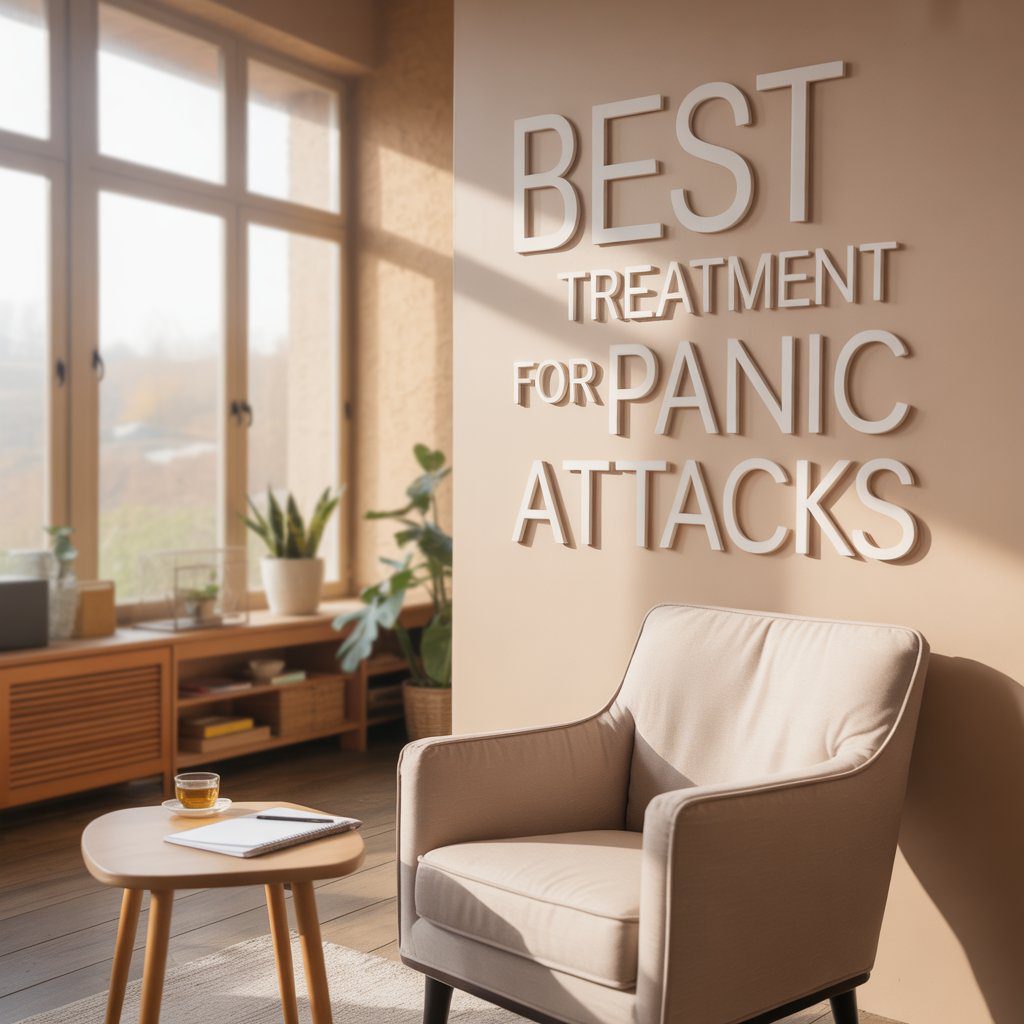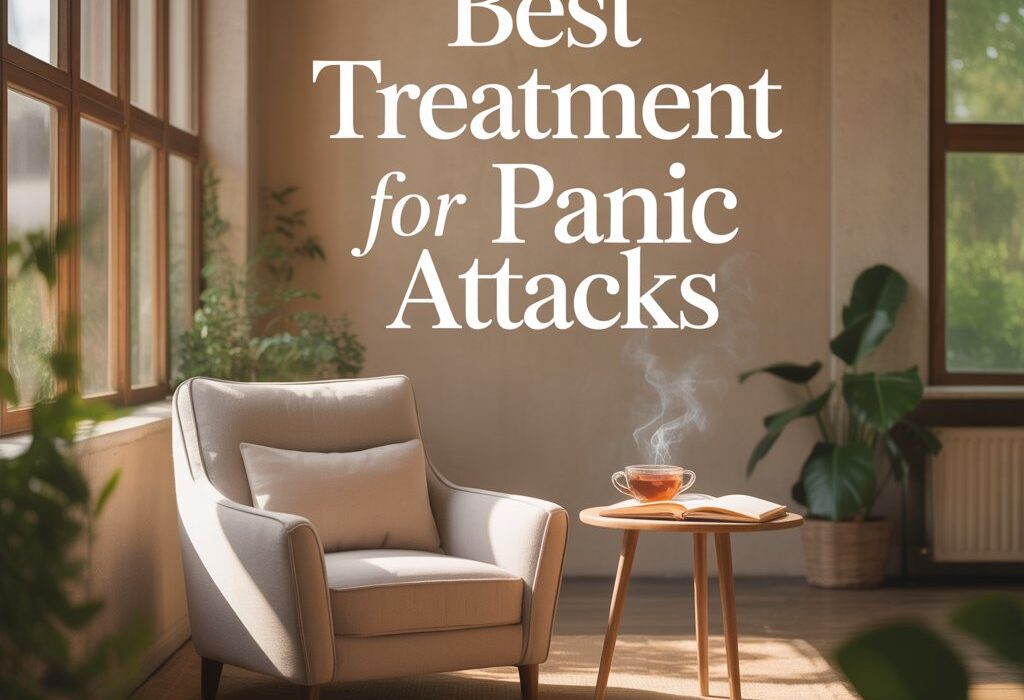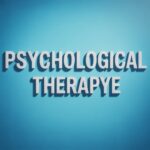Finding the Best Treatment for Panic Attacks
The experience of a panic attack is one of the most terrifying and overwhelming sensations a person can endure. In a matter of moments, you can be overcome by a surge of intense fear, a pounding heart, shortness of breath, and a gripping belief that you are losing control or even dying. If you have experienced this, you are not alone. The urgent question that follows is, “How do I make this stop?” The good news is that panic attacks are highly treatable. Finding the best treatment for panic attacks is not a one-size-fits-all endeavor, but a personalized journey that combines proven therapeutic techniques, potential medication, and powerful lifestyle adjustments to reclaim a sense of safety and control in your life.
A panic attack is your body’s innate “fight-or-flight” system firing at a false alarm. It is a cascade of physiological and psychological symptoms that, while feeling life-threatening, are not dangerous. Understanding this distinction is the first crucial step toward recovery. The goal of treatment is not to eliminate all anxiety, but to learn to manage its peaks and, over time, significantly reduce the frequency and intensity of the attacks. Consequently, the best treatment for panic attacks is typically a multi-faceted approach that addresses the thoughts, physical sensations, and behaviors that fuel the panic cycle.
The Gold Standard: Cognitive Behavioral Therapy (CBT)
When it comes to structured, evidence-based psychological intervention, Cognitive Behavioral Therapy (CBT) is widely regarded as the best treatment for panic attacks. CBT operates on the principle that our thoughts, feelings, and behaviors are interconnected. For panic disorder, it specifically targets the catastrophic misinterpretations of bodily sensations.
1. Cognitive Restructuring: Changing Your Thought Patterns
This component involves learning to identify and challenge the frightening thoughts that arise during a panic attack. For example, the thought, “My heart is racing, I’m having a heart attack!” is reframed to, “This is a normal panic symptom. My heart is strong, and this feeling will pass.” This process helps break the cycle of fear that amplifies the physical symptoms.
2. Interoceptive Exposure: Facing the Physical Sensations
This is a powerful and controlled technique where you are safely guided to bring on the physical sensations of a panic attack. This might involve spinning in a chair to create dizziness or breathing through a thin straw to simulate shortness of breath. By repeatedly and voluntarily experiencing these sensations in a safe environment, you rob them of their power. Your brain learns that a racing heart or dizziness is uncomfortable, but not dangerous, thereby extinguishing the fear response.
Harnessing Your Body’s Calming Power: Breathing and Relaxation
While CBT addresses the psychological roots, directly managing the body’s physiology is equally critical. During a panic attack, breathing becomes rapid and shallow (hyperventilation), which worsens symptoms like dizziness and tingling.
Diaphragmatic Breathing
Also known as “belly breathing,” this technique involves taking slow, deep breaths that fill your diaphragm, not just your chest. Practicing this for a few minutes daily can train your body to default to a calmer breathing pattern during times of stress. When you feel panic rising, focusing on a slow inhale through the nose for four seconds, holding for two, and exhaling slowly through the mouth for six seconds can help short-circuit the panic response and activate the body’s parasympathetic “rest and digest” system.
Progressive Muscle Relaxation (PMR)
PMR is a technique that involves systematically tensing and then relaxing different muscle groups throughout the body. This practice helps you become more aware of physical tension, a common precursor to anxiety, and teaches you how to release it voluntarily. Regular practice can lower your overall baseline of anxiety, making you less vulnerable to panic triggers.
The Role of Medication in a Comprehensive Treatment Plan
For some individuals, particularly those with severe or frequent attacks, medication can be a valuable component of the best treatment for panic attacks. It is important to view medication not as a cure, but as a tool that can create a window of stability, allowing you to more effectively engage in therapy.
- Selective Serotonin Reuptake Inhibitors (SSRIs): These antidepressants are often the first-line pharmacological treatment. They work by increasing serotonin levels in the brain, which helps regulate mood and anxiety over time.
- Serotonin-Norepinephrine Reuptake Inhibitors (SNRIs): Another class of antidepressants that can be effective for panic disorder.
- Benzodiazepines: These are fast-acting sedatives that can provide immediate relief during an acute panic attack. However, they are generally prescribed for short-term or emergency use due to their potential for dependence and tolerance.
Medication decisions should always be made in close consultation with a psychiatrist or doctor who can weigh the benefits and risks based on your individual health profile.
Lifestyle Adjustments: Building a Foundation for Resilience
Sustainable recovery from panic attacks is supported by a foundation of healthy daily habits. These adjustments empower you to build a nervous system that is more resilient to stress.

Regular Physical Exercise
Exercise is a powerful natural anxiety reliever. It metabolizes excess stress hormones like adrenaline and cortisol, and it promotes the release of endorphins, the body’s natural mood elevators. Aim for at least 30 minutes of moderate exercise, such as brisk walking, swimming, or cycling, most days of the week.
Mindfulness and Meditation
Mindfulness practices teach you to observe your thoughts and physical sensations without judgment. Instead of getting swept away by a wave of panic, you learn to “surf” the urge, watching it rise, peak, and fall without reacting catastrophically. This creates a crucial space between the trigger and your reaction, which is where your power to choose a different response lies.
Prioritizing Sleep and Nutrition
Chronic sleep deprivation and a diet high in sugar and caffeine can significantly lower your anxiety threshold. Establishing a consistent sleep routine and reducing stimulants are essential steps in creating an internal environment that is less hospitable to panic.
Taking the First Step Toward Freedom
Living in fear of the next panic attack is a prison. However, the key to unlocking the door is within your reach. The journey to finding the best treatment for panic attacks begins with a single, courageous step: consulting a mental health professional. A qualified therapist can provide a proper diagnosis and guide you in creating a personalized treatment plan that combines these powerful strategies. Remember, recovery is a process, not an event. With commitment and the right support, you can move from a life controlled by fear to one defined by freedom and resilience.
Frequently Asked Questions (FAQs)
1. Can panic attacks cause fainting or a heart attack?
While the symptoms can feel similar, it is extremely rare to faint during a panic attack. Fainting is caused by a drop in blood pressure, whereas panic attacks typically increase your blood pressure and heart rate. Similarly, while the chest pain is frightening, it is not a heart attack. However, if you are unsure, it is always safest to seek immediate medical attention.
2. How long does it take for treatment to work?
With consistent practice of CBT techniques, many people see a significant reduction in the frequency and intensity of their panic attacks within 8 to 12 weeks. Medication like SSRIs may take 4-6 weeks to reach full effect. The key is patience and consistency with your treatment plan.
3. What should I do if I feel a panic attack coming on?
First, if possible, remind yourself that this is a panic attack and it will pass. Then, try to ground yourself in the present moment using the “5-4-3-2-1” method: identify 5 things you can see, 4 things you can feel, 3 things you can hear, 2 things you can smell, and 1 thing you can taste. This engages your senses and pulls focus away from the internal panic. Follow this with slow, deep diaphragmatic breathing.
4. Are panic attacks a sign of a more serious mental illness?
Panic attacks are a symptom, not an illness themselves. They are the primary feature of Panic Disorder, but they can also occur in the context of other conditions like Generalized Anxiety Disorder, Social Anxiety, or PTSD. A proper diagnosis from a mental health professional is essential to determine the root cause.
5. Can I completely cure my panic attacks?
Many people achieve full remission, meaning they no longer experience panic attacks, or they become so infrequent and mild that they no longer impact their life. For others, it becomes a manageable condition. The goal of treatment is to give you the tools to manage anxiety effectively, so even if a panic attack occurs, you have the confidence to handle it without it derailing your life.



